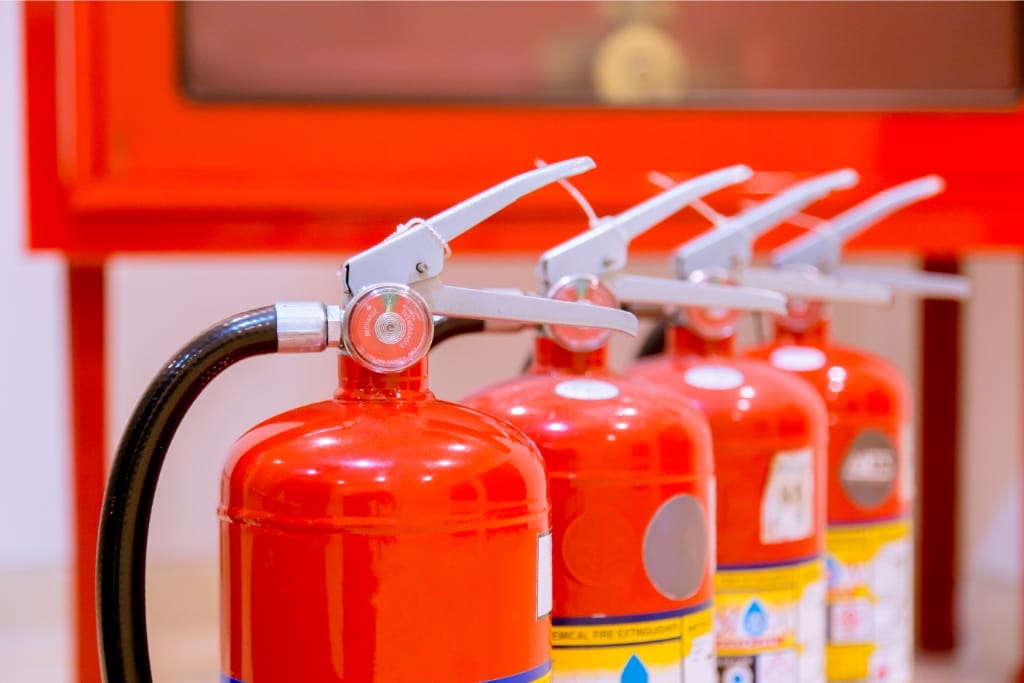A home fire is one of the most devastating emergencies any household can experience.
Each year, thousands of homes are impacted by fires, and in many cases, the damage could have been minimized or prevented with a proper fire safety plan.
But here's the good news—creating a comprehensive home fire safety plan is simpler than you think, and it could save lives.
This article will walk you through seven actionable steps to create a home fire safety plan that will help protect your loved ones while also minimizing potential property damage.
Why Do You Need A Fire Safety Plan?
Home fires often strike without warning, so preparation is key.
Having a fire safety plan ensures that everyone in your household knows exactly what to do in an emergency.
It can mean the difference between a narrow escape and unnecessary tragedy, as it reduces panic and improves readiness.
Step 1)) Discuss Fire Safety With Your Household
Gather everyone living in your home—including children—to talk about the importance of fire safety.
Explain how a fire can happen unexpectedly and stress the importance of everyone following the escape plan.
Assign responsibilities to various family members to minimize confusion during an emergency.
Key Tips:
- Teach children to never hide during a fire and to follow the plan instead.
- Reassure everyone that focus and teamwork play a major role in staying safe.
Step 2)) Identify Potential Hazards In Your Home
Before creating a fire escape plan, assess your home for potential fire hazards.
Kitchens, heating equipment, electrical systems, and flammable materials are the most common sources of house fires.
Pay close attention to high-risk zones and take steps to eliminate avoidable risks.
Actionable Steps:
- Inspect electrical cords for damage and repair or replace faulty wiring.
- Keep space heaters at least three feet away from flammable objects.
- Never leave cooking unattended, especially on a stovetop.
- Store flammable products, such as cleaning supplies, safely.
Step 3)) Map Out Escape Routes For Every Room
Design escape routes so that everyone has at least two ways to exit each room safely.
The primary route might be a hallway or door leading to the outside, while a secondary route could be a window.
Mark these escape paths on a simple floor plan and ensure that no doors or exits are blocked.
Things to Remember:
- Inspect windows to make sure they open easily and have no obstructions.
- Teach family members how to open sliding windows or remove screens quickly.
- If any routes involve jumping from a second floor, consider adding escape ladders.
Step 4)) Install And Maintain Fire Safety Equipment
No fire safety plan is complete without reliable fire detection and suppression tools.
Working smoke alarms provide crucial early warnings, while fire extinguishers give you a fighting chance at containing small fires before they spread.
Essentials to Install:
- Smoke Alarms: Install alarms on every level of your home and within each bedroom.
- Fire Extinguishers: Ideally, have one in the kitchen, garage, and near exits.
- Carbon Monoxide Detectors: If your home uses gas appliances, these are a must-have.
Monthly maintenance is key. Test smoke alarms by pressing the test button, and replace batteries at least once a year.
Replace the smoke alarm unit every 10 years to ensure functionality.
Step 5)) Create And Practice The Plan
Document your home fire safety plan on paper and hang it in a visible area (e.g., on the refrigerator).
Practice the plan with your household at least twice a year so everyone is familiar with what to do.
Practice Checklist:
- Simulate different fire scenarios at various times of the day.
- Have your family crawl low under the smoke (since it rises) and head to the nearest exit.
- Practice using escape ladders and opening locked windows, if applicable.
- Set a designated meeting point outside the home.
Step 6)) Teach “Stop, Drop, And Roll”
Make sure everyone in your household knows the “Stop, Drop, and Roll” method in case their clothing catches fire.
This method reduces the severity of burns and helps extinguish flames, especially in children who might panic.
Steps to Remember:
- Stop moving immediately.
- Drop to the ground and cover your face with your hands.
- Roll back and forth until the flames are out.
Step 7)) Plan For Pets And Special Needs
Don’t forget to prepare for pets and family members with special needs.
Pets often hide during fires, so knowing their common hiding spots can save valuable time.
Similarly, assign someone the responsibility of assisting elderly or disabled individuals in evacuating the home.
Helpful Tips:
- Keep leashes, pet carriers, and supplies near exits for quick access.
- If you have disabled household members, consider installing visual alarm systems.
- Practice evacuating with these considerations in mind to make the process smoother.
Conclusion
Creating a home fire safety plan might seem like a lot of work initially, but the peace of mind it provides is invaluable.
A little preparation now can prevent panic and chaos later, ensuring that your family is ready to act quickly and stay safe.
Take the first step today by evaluating your home for fire hazards and drafting your plan.
Don’t just stop at creating it—practice regularly and update it whenever necessary. Your loved ones’ safety is worth the effort.
Sacramento Apparel
Embrace the spirit of Sacramento with our high-quality, machine-washable apparel! Whether you're a local or just passing through, our Sacramento Apparel offers a variety of styles, from T-shirts and Tank Tops to Pullover Hoodies and V-neck t-shirts. Our clothing is a perfect way to remember your time in California's capital city or to gift a piece of the Sacramento experience to loved ones. They're made with durability in mind, ensuring that the memories can be worn and cherished for years to come. Explore our collection now and take home a piece of Sacramento pride today!

